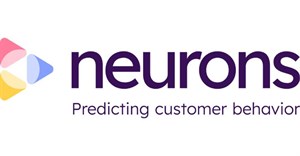Trending



 Clothing brand Curve Gear opens new store in Tygervalley CentreLindsey Schutters
Clothing brand Curve Gear opens new store in Tygervalley CentreLindsey Schutters Sabre EMEA 2024 Awards: Razor PR, Retroviral top SA agenciesDanette Breitenbach
Sabre EMEA 2024 Awards: Razor PR, Retroviral top SA agenciesDanette Breitenbach
Elections 2024
Jobs
- General Sales Worker Bushbuckridge
- Field Sales Representative Nelspruit
- Sales Representative Malelane
- Area Sales Consultant Hazyview
- Promoters Nelspruit
- Artwork Layout Artist - Sublimation and Display Johannesburg
- Sales Associate Bushbuckridge
- Event Promoter Hazyview
- Front Counter Assistant Johannesburg
- Junior DTP Operator Johannesburg
Introvert vs extrovert: does brand personality really matter?

We learned that our fears around consumption were unfounded. What we discovered was that the audience was consuming our medication mostly on a Monday night or a Tuesday morning. By analysing the patterns of conversation around these data points it became clear that over the weekends, people were visiting with friends and family (as many people do). During these visits they were being exposed to the cold and flu virus. These viruses usually have a one to three day incubation period, hence the Monday night or Tuesday morning consumption of the product. What was clear though (and in retrospect, perhaps a little obvious under the current circumstances) was that people with a propensity to socialise were more inclined to get sick during the winter months. Unfortunately, the demo was short, and we ended up not subscribing to the tool, but my mind boggles at what kind of other insights we could’ve found.
While this insight is interesting, it isn’t particularly useful in the practical sense. It does bring up an interesting question though, how much would our products, services, and marketing change if we had access to data like this for every facet of our business?
In our recent CX report, we uncovered a similar insight. While 82% of the people we polled have shopped online, 52% of our respondents said they’d prefer doing things face-to-face, with 2% saying they’d rather do everything face-to-face. Conversely, 15% of our respondents want to do everything online and 32% will do what’s possible and go into branches when required. It seems clear that there is an almost 50/50 split between those who want to engage with human beings vs those that would like to avoid human contact where possible. The introvert and the extrovert.
This insight is incredibly powerful because it speaks directly to someone’s comfort level in any given situation. When we’re generating qualitative data and insights, we spend a lot of time trying to map out a customer experience, looking for pain points and places where there are opportunities for us to improve the product, service, or message. How often are we sense-checking our information against personality? In fact, how much work are we doing to discern personality in the first place?
Back to our introvert/extrovert data. An introvert will look for several things in an online experience. They’ll be paying a lot of attention to UX, whether products easy to find, whether recommended products relevant (and in stock), and how seamless the checkout process is. In the extrovert space, 29% of the respondents will be swayed to purchase on the advice of the store assistant. Two different personality types, two vastly different measures of a good experience. It doesn’t end there though. If we expand on the extrovert personality type, we’re looking at a group of generally outspoken people who are generally happier because society tends to reward extroverted behaviour. An extrovert is more than likely to be your brand advocate, both offline and online and as such you should create mechanisms to facilitate.
Your introverted customer is going to be far more thoughtful and reserved, and so they’ll be looking for brands that reflect this kind of approach to life. With this lens you can begin identifying brands that are designed to appeal to the extroverted vs. brands that are designed to appeal to the introverted.
And that is just one aspect of the plethora of personality traits that human beings exhibit. If we went beyond this into the realms of creativity, openness, sense of humour, and beyond, we may find all sorts of ways of creating more bespoke experiences that resonate with our customers.
So, what does this all mean? Putting together a ‘brand voice’ should not result in a generic set of adjectives describing a ‘fun, but helpful and smart’ person. You need to take it for more seriously because it directly impacts who the customer is that your brand will attract. Once you’ve made the promise of who you are, you need to fulfil that promise. If you’ve determined that your brand is fun and outgoing, you need to make sure that your customer experience reflects that in spades.
The colds and flu medication I mentioned at the start? Notoriously fun ads and activations that would absolutely appeal to someone fun and outgoing. Is it a coincidence that the people using it are getting sick from partying on the weekends? Maybe not.












